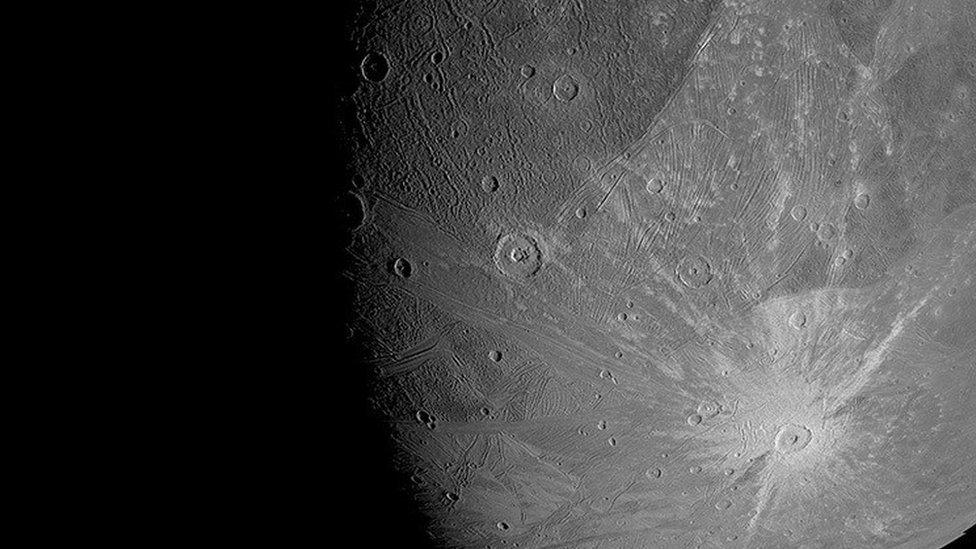Jupiter: Water vapour found on Ganymede
- Published
- comments

Astronomers have discovered water vapour in the atmosphere of Jupiter's moon, Ganymede, for the first time.
Scientists used new and old data from Nasa's Hubble Space Telescope to find the water vapour.
The vapour is produced through a process is called sublimation, when the ice on the surface warms and changes from a solid to a gas.
This new discovery helps scientists to understand Jupiter and its environment better and learn how these gas giant planets form and evolve.
Astronomers believe that Ganymede may have a liquid ocean that is 100 miles below the crust.
The large moon may also contain more water than all of Earth's oceans.
Scientists are excited about this new finding because it also helps the European Space Agency's upcoming mission Juice, which stands for Jupiter Icy moons Explorer.
This mission is due to launch in 2022 and arrive at Jupiter in 2029. It will spend three years observing Jupiter and three of its largest moons which include Ganymede.
Take a look at Jupiter and its moon Ganymede, taken from Nasa's Cassini spacecraft in 2000
Ganymede is the largest moon in the solar system, about 50 percent bigger than our Moon
It it thought to have more water than all the water on Earth's surface
It is the only moon with its own magnetic field.
Nasa's Juno mission is currently taking a closer look at Ganymede.
The mission set off in 2016 and has been studying Jupiter and its environment.
- Published26 July 2021
- Published24 July 2021
- Published25 July 2021
